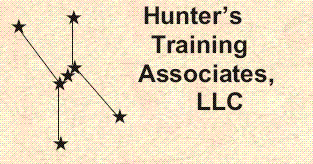
This page suggests courses available from Hunter's Training Associates that are oriented towards helping z/OS applications developers gain the skills and experience needed to create modern business applications
These courses can help your developlers learn how to use z/OS more effectively
For using ISPF most effectively
ISPF Update - 2 days; pick up the major enhancements to ISPF over the last 10 years
For Assembler programmers
z/OS Assembler Programming Part 3: Update - 1 day; covers enhancements to the hardware insruction set introduced in the 1990's as well as HLASM version 1.4
z/OS Assembler Programming Part 4: z/Architecture and z/OS - 4 days; pick up the changes in hardware instructions and the HLASM versions 1.5 and 1.6
See also "Using LE Services in z/OS", "Cross Program Communication in z/OS", and "Writing z/OS CGIs in Assembler", below
For COBOL programmers
Enterprise COBOL Update - 2 days; examine all the changes in COBOL from COBOL II through the latest Enterprise COBOL compiler
Enterprise COBOL Unicode and XML Support - 2 days; provides theory and practice with COBOL working with files in non-EBCDIC code pages as well as parsing, creating, and validating XML documents
See also "Using LE Services in z/OS" and "Cross Program Communication in z/OS", and "Writing z/OS CGIs in COBOL", below
For all programmers
Using LE Services in z/OS - 3 days exploring the concepts and facilities of Language Environment and all callable services; this course is multi-lingual, allowing students to run labs in Assembler or COBOL or PL/I or C;
Cross Program Communication in z/OS - 4 days to examine four languages (pick the one(s) you want to work with): Assembler, COBOL, PL/I, C: how to define elementary items, arrays, structures; static calls, dynamic calls; external data; passing arguments and receiving parameters in compatible styles; alternate entry points; the program binder
Creating and Using DLLs in z/OS - 1 day to examine four languages (pick the one(s) you want to work with): Assembler, COBOL, PL/I, C: how to create DLLs; how to code programs that invoke DLLs (DLL applications); DLL support functions; PL/I packages; binder parms for DLLs;
For developers working with DB2
DB2: Greatest Hits - 3 days to learn the essentials of changes in DB2 for versions 8 and 9 that are most relevant to the application developer; labs are COBOL, but content based on other languages can be developed on request
DB2 and XML - 2 days to learn the essenence of XML data types as stored in DB2.
For developers working with z/OS UNIX
Introduction to z/OS UNIX - 3 days for understanding the fundamental concepts and commands, including enough tools to build a small web site served from z/OS
Shell Script Programming in z/OS UNIX - 3 days picks up additional UNIX commands and how to create and run shell scripts; includes discussion of using 'sed' to create HTML pages from flat files
Developing Applications for z/OS UNIX - 3 days discussing writing programs in Assembler, COBOL, PL/I, or C (take your pick) that are designed to run under the z/OS UNIX shell; includes compiling, assembling, binding, and running and the 'make' command
For developers working with the Web from z/OS
You and z/OS and the World Wide Web - 5 days; a standards-based course that is designed for the z/OS environment; covers HTML, CSS, DOM, JavaScript, and a peek at the next standards under development
Introduction to CGIs on z/OS - an intense 1 day course describing the issues for writing CGI programs or scripts in any language; lays the groundwork for language-specific CGI coding courses
Writing z/OS CGIs in Assembler - 2 days of coding and testing Assembler programs that handle CGI work for GET and POST, processing environment variables, and working with VSAM files and DB2 tables, cookies and hidden controls
Writing z/OS CGIs in COBOL - 2 days of coding and testing COBOL programs that handle CGI work for GET and POST, processing environment variables, and working with VSAM files and DB2 tables, cookies and hidden controls
For developers working with XML and HTML
See "Enterprise COBOL Unicode and XML Support", "You and z/OS and the World Wide Web", and "DB2: Greatest Hits", above, and, in addition:
Using DFSORT and ICETOOL - 4 days that explore IBM's DFSORT product, which comes with a utiltiy called ICETOOL; this includes the ability to sort data on fields that have alternative collating sequences such as different EBCDIC code pages or even ASCII, and the ability for the sort to put out XML and HTML
This page last updated: 1 August, 2014 - HHC
Copyright © 2014 by Hunter's Training Associates, LLC